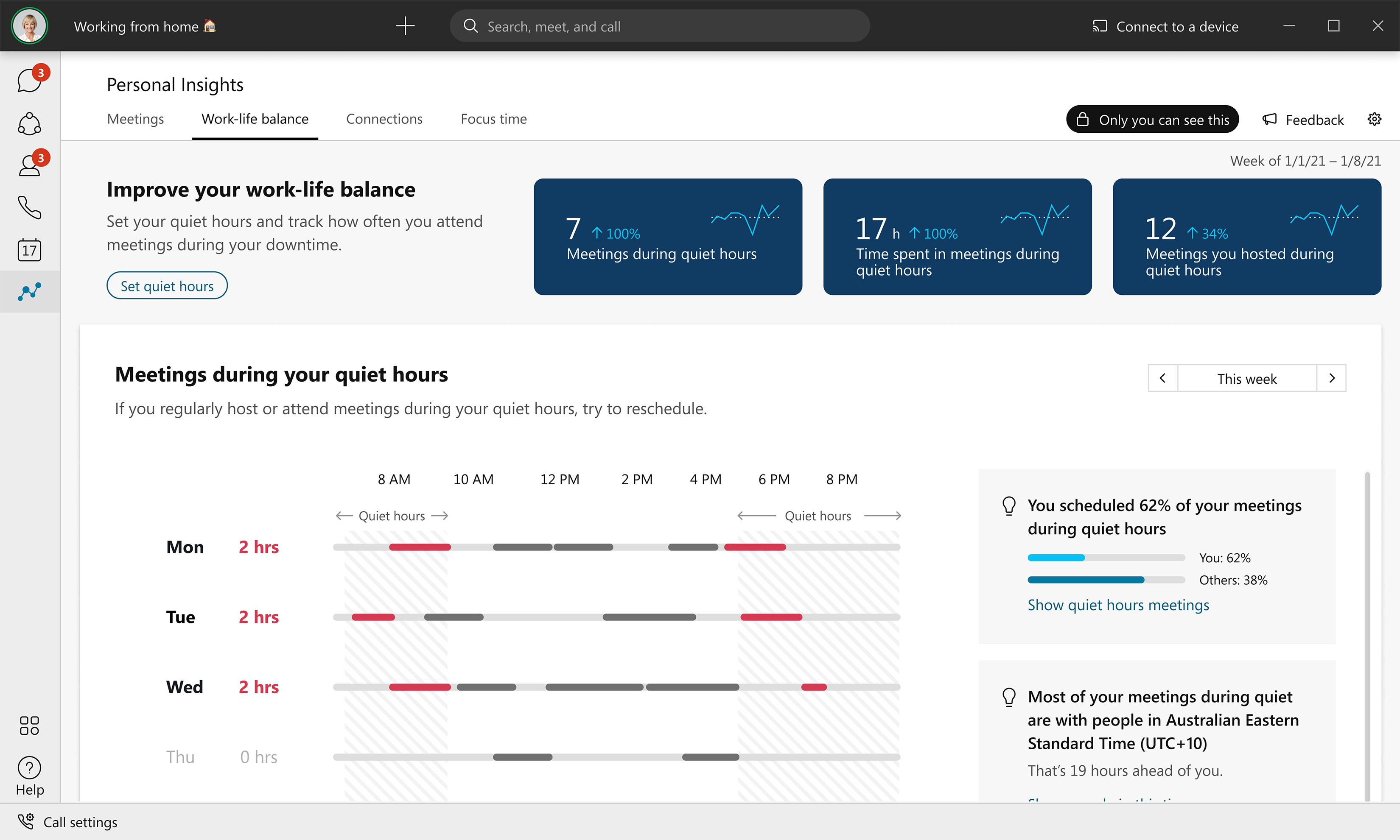Something to look forward to: I don’t know about you, but I’m extremely curious to see how the back-to-the-office process goes for a lot of organizations. On the one hand, I’m pleased and excited to see companies starting to announce timelines for the return of employees to their workplaces, because it’s a very strong sign of return to normalcy. On the other hand, I’m genuinely concerned that some companies are dramatically overreacting to the concept of hybrid work and will end up creating environments that inadvertently end up discouraging their employees from spending more time at the office, once it’s deemed safe to do so.

Cisco’s concept for hybrid work, which was just updated at its Cisco Live conference this week, isn’t really dependent on things like how companies choose to reconfigure their physical office spaces. Instead, it’s focused on expanding the capabilities and reach of the company’s Webex communications platform, which is specifically designed to create environments that work equally well for employees who choose to work in the office and for those who continue to work remotely.
Like its many competitors, Cisco has been building out the means by which employees can communicate and collaborate with each other via Webex. From real-time transcription and translation of meetings in more than 100 languages, to multiple adjustable screen layouts and the useful ability to have the presenter appear in front of her slides, Cisco has been maintaining the rapid pace of innovation seen in this product category.
At this year’s Cisco Live keynote, the company also showed off some unique new innovations that emphasize the strength and unique assets of the large installed base it had for Webex before the pandemic, as well as demonstrating its deep understanding of the challenges that traditional video conferencing tools have faced.
First, leveraging its long history in unified communications tools, the company demonstrated a number of new features around Webex calling, all of which can leverage its presence in cloud calling, IP phones, PBX systems, and other voice-based communication tools. Though there’s little doubt that video-based communications are going to be extremely common moving forward, there’s also been a growing recognition that not every call has to be done via video.
Though there’s little doubt that video-based communications are going to be extremely common moving forward, there’s also been a growing recognition that not every call has to be done via video.
Cisco has been offering audio call service plans via Webex for a long time, and what they just announced is the ability to take one of those calls and escalate it, in real-time, to a full-blown Webex call, complete with all the transcription, collaboration and, yes, video. This type of capability is ideal for situations in which a basic phone call ends up morphing into a full-blown idea-generating session. While in many ways, it may seem obvious because of how frequently that can happen, the tools haven’t really been in place to enable it until these announcements. In the post-pandemic world, where meeting participants are likely to be in a much wider variety of locations than they are today, the practical value of these hybrid calling solutions will likely become much more apparent.
Another reality that’s going to be more apparent when people do start returning to the office is the integration of a few individuals calling in with their laptops to a meeting, mixed in with a meeting room full of people sitting around a conference table.
Part of the reason tools like Webex have been so successfully used during the pandemic is that they’ve essentially put everyone on a level playing field. When you’re just one of the 9 or 16 or 25 or however many bingo squares on a screen, it’s easy to feel like an equal participant in a meeting. Once a large percentage of people start returning to the office, however, those mixed mode meetings are going to be much more common.
The problem is that most of us will also probably quickly recall (or maybe realize for the first time) how ineffective traditional video conferencing tools are/were in those kinds of situations. This is one of the key reasons why video conferencing tools in most organizations saw fairly modest usage before the pandemic.
Once a large percentage of people start returning to the office, mixed mode meetings are going to be much more common (...) and most of us will recall how ineffective traditional video conferencing tools are/were in those kinds of situations, and the reason why video conferencing saw fairly modest usage before the pandemic.
Cisco’s answer is a clever new AI-based technology that’s designed to take the video from a conference room-based camera and split it up into the individual squares of each person present, making it seem (ironically) that everyone is still remote.
In addition to video, part of Cisco’s secret sauce is expected to be in the extrapolation of each individual speaker’s voice to make the experience complete. Final details of the technology, which isn’t expected to be shipping until later this year, are still unclear, but it may be able to leverage the cameras and microphones of notebook PCs that most people will likely bring into these meetings.
Conceptually, this sounds like a great way to help overcome the FOMO (fear of missing out) and other concerns that remote employees are likely to have in these situations, but the devil is certainly in the details and how well the idea is executed. Now that we’ve all become accustomed to it, however, the trick is going to be how to maintain that level of balance and equality when some people (likely a majority) are physically together in a meeting room and others are calling in.

Webex People Insights
Another big challenge to achieve high-quality collaboration experiences in a hybrid work world is overcoming the limitations of the large installed base of very old and very limited video conferencing hardware that’s been gathering dust over the last year or more.
I expect to see a huge surge in spending on conference room equipment installations and upgrades from now into early 2022 to address that issue. Cisco clearly sees that and is responding by reducing the pricing (up to 50%) on some of its Webex hardware devices and extending the range of options it offers. Starting with a $159 Cisco-branded webcam, up to its $2,499 Desk Pro dedicated conferencing screen and $2,999 Webex room kit, the company is making needed enhancements and pricing adjustments to sweeten its hardware offerings.
Finally, as part of the overall employee experience enhancements that Cisco is building into Webex, the company also unveiled a wide range of what it calls People Insights tools. Powered by the Webex Graph, these tools are designed to help employees understand their working, communication, and collaboration habits.
Though Microsoft’s first efforts in providing something somewhat similar via Teams proved to be controversial because of potential privacy concerns, Cisco went out of its way to point out that the data it generates for People Insights is for the employee’s eyes and edification only. Essentially, Cisco wants to provide what it believes will be useful data for employees to understand their own work habits—without a “score”—in an effort help people understand how to do things like achieve better work/life balance. In the boundary-less world of pandemic-based work-from-home, that’s an extremely important tool and something that will continue to have value in the new hybrid work world.
There’s little doubt that, as employees do start returning to their offices this summer or early fall, organizations are going to learn a great deal (and hopefully not too painfully) about what does and doesn’t work in a hybrid work environment. Given the strong focus and wide range of options that Cisco unveiled, it’s clear the company wants to play a role in making the process smooth and effective for organizations. Let’s hope it can make the process easier.
Bob O’Donnell is the founder and chief analyst of TECHnalysis Research, LLC a technology consulting firm that provides strategic consulting and market research services to the technology industry and professional financial community. You can follow him on Twitter @bobodtech.
https://www.techspot.com/news/89107-back-office-cisco-wants-make-hybrid-work-actually.html